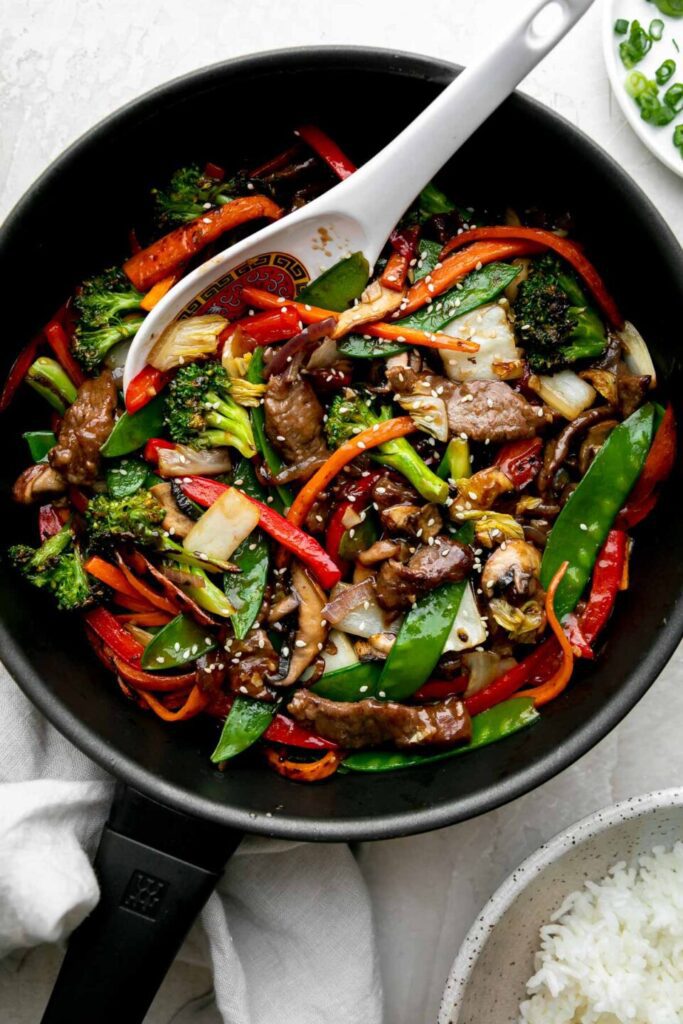Sautéing is a versatile cooking technique which involves cooking food in a small amount of oil or butter over medium-high heat in a sauté pan or skillet. To achieve perfectly sautéed dishes every time, prepare the ingredients beforehand, use the right pan, heat the pan properly, add vegetables first then meat, do not overcrowd the pan, season the food properly, use the right cooking fat, stir frequently, deglaze the pan and let the food rest. By mastering sautéing, home chefs can easily and quickly prepare healthy and flavorful meals.
Sauté Like a Pro: Essential Tips for Perfectly Cooked Veggie and Meat Dishes
Sautéing is one of the most versatile cooking techniques that every home cook should master. It involves cooking food in a small amount of oil or butter over medium-high heat in a sauté pan or skillet. When done correctly, sautéed dishes are flavorful and healthy, preserving the nutrients and texture of the food.
If you’re new to sautéing, don’t worry. These tips and tricks will help you become a pro and achieve perfectly cooked veggie and meat dishes every time.
Tip #1: Prepare the ingredients beforehand
Sautéing requires quick and continuous movement of food in the pan. That’s why it’s crucial to prep all the ingredients and have them ready to go before starting the cooking process. Cut vegetables and meat into small and equal-sized pieces to ensure even cooking.
Tip #2: Use the right pan
A good sauté pan or skillet is essential for even cooking and heat distribution. Use a pan with a flat bottom and high, sloping sides. The sloping sides will allow for easy movement of food and prevent spills. Additionally, a non-stick pan will make the cleanup process easier.
Tip #3: Heat the pan properly
Before adding any ingredients, heat the pan over medium-high heat. Add oil or butter when the pan is hot and wait for it to heat up before adding food. A hot pan will prevent sticking and give veggies and meat a nice sear. However, make sure not to overheat the pan, as this can cause the oil to smoke and burn.
Tip #4: Add vegetables first, then meat
Start by sautéing vegetables in the pan. Vegetables usually take longer to cook, depending on their texture and density. Once the veggies are cooked to your liking, remove them from the pan and set them aside. Then, add the meat to the pan and cook until browned and cooked through.
Tip #5: Don’t overcrowd the pan
Overcrowding the pan will cause the food to steam instead of sautéing. This will prevent the food from getting a nice sear and lead to uneven cooking. So, make sure to leave enough space for each ingredient to cook properly and prevent sticking.
Tip #6: Season the food properly
Proper seasoning is key to achieving delicious sautéed dishes. Add salt and pepper to taste, and don’t be afraid to experiment with other seasonings, like garlic, herbs, and spices. Remember to season each ingredient individually and taste as you go to avoid overseasoning.
Tip #7: Use the right cooking fat
The type of cooking fat you use can affect the flavor of your sautéed dishes. Olive oil is a healthy option, but it has a strong flavor that may not be suitable for all recipes. Butter has a rich flavor and can add depth to savory dishes. Coconut oil is a good option for vegan or dairy-free recipes. Choose the right fat depending on your recipe and personal preference.
Tip #8: Stir frequently
Stirring the ingredients frequently will prevent sticking and ensure even cooking. Use a spatula or tongs to move the food around the pan. However, avoid over-stirring, as this can cause the food to break apart and lose its texture.
Tip #9: Deglaze the pan
Deglazing the pan simply means adding a liquid, such as broth or wine, to the pan after cooking to scrape up any bits or juices stuck to the bottom. This will create a flavorful sauce that can be poured over the sautéed dish for added flavor.
Tip #10: Let the food rest
After sautéing, let the food rest for a few minutes before serving. This will allow the flavors to meld together and the juices to redistribute. It also prevents the food from becoming too hot to eat right away.
In conclusion, sautéing is a great technique to master for quick and healthy meals. With these tips and tricks, you’ll be able to achieve perfectly cooked veggie and meat dishes every time. Happy cooking!
